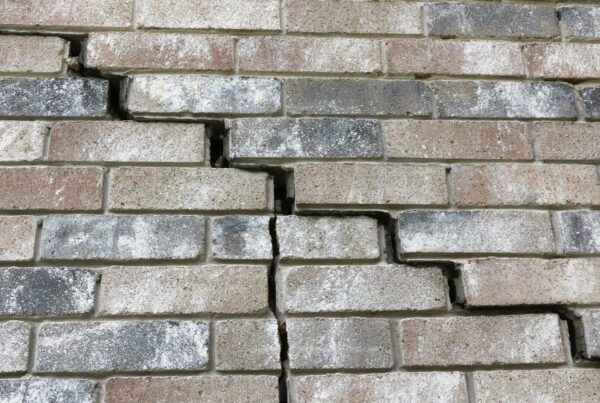Buying or selling a home is one of the most significant financial decisions most people will make in their lifetime. Given the high stakes, ensuring that the property is in optimal condition is critical to avoiding costly surprises down the road. This is where a professional home inspection comes into play. A home inspection provides a thorough assessment of a property’s condition, uncovering potential issues that might otherwise go unnoticed. For buyers, it ensures confidence in their investment, while sellers gain the opportunity to address problems proactively and enhance marketability.
In this blog, we’ll explore why home inspections are a fundamental part of any real estate transaction. We’ll discuss how home inspections protect your investment, uncover hidden damages, and ultimately empower both buyers and sellers with the information needed for a successful sale. Whether you’re preparing to close on your dream home or looking to sell with peace of mind, understanding the value of a home inspection is a step you can’t afford to miss.
What is a Home Inspection?
Definition and Purpose
A home inspection is a professional, non-invasive examination of a property’s structure and essential systems. Conducted by a qualified home inspector, it provides an objective assessment to identify existing or potential issues that may affect the property’s safety, functionality, or value. The primary goal of a home inspection is to arm buyers and sellers with crucial information, ensuring more informed decisions during real estate transactions.
Scope of a Typical Inspection
During a home inspection, several key components of the property are thoroughly examined. These typically include:
-
- Roof – Evaluating the condition of shingles, flashing, gutters, and any potential leaks or damage.
- Foundation and Structural Integrity – Checking for evidence of cracks, settlement, or water intrusion.
- Electrical System – Inspecting wiring, outlets, switchboards, and circuit breakers to ensure safety and functionality.
- Plumbing System – Examine pipes, faucets, water heaters, and drains for signs of leaks, corrosion, or wear.
- HVAC Systems – Testing heating, ventilation, and air conditioning units for performance and efficiency.
While these areas represent the general scope of an inspection, certain conditions or risks may require specialized testing. For instance, termite inspections, radon gas tests, or mould assessments might be necessary based on regional factors or suspected issues.
Who Performs the Inspection?
It is critical to ensure that the home inspection is carried out by a licensed, certified professional with expertise in evaluating residential properties. In Canada, home inspectors are typically certified through various organizations, ensuring they meet rigorous standards of training and ethics. While general contractors may be knowledgeable about certain aspects of home construction, only certified home inspectors possess the specialized training and tools required to conduct a comprehensive and unbiased evaluation. Choosing the right inspector can make all the difference in uncovering hidden problems and protecting your investment.
The Importance for Buyers
Uncovering Hidden or Unseen Problems
When purchasing a home, many significant defects may not be immediately visible during a casual walkthrough. Issues such as water damage behind walls, outdated or faulty electrical wiring, foundation cracks, or plumbing leaks are often hidden from view but can lead to costly repairs down the line. A professional home inspection helps identify these issues early, empowering buyers to address them before closing the deal. By discovering these problems in advance, buyers can avoid unpleasant surprises that may strain their finances or disrupt their plans after moving in.
Leverage in Price Negotiations
An inspection report is a powerful tool during the negotiation process. If significant issues are uncovered, buyers can use the findings to request repairs or negotiate the home’s sale price. For example, if a home inspection reveals a roof nearing the end of its lifespan, the buyer can ask the seller for a credit towards its replacement or adjust the sale price to account for future expenses. Similarly, if a malfunctioning HVAC system is identified, buyers might negotiate a repair allowance or request that the issue be resolved before closing. These scenarios enable buyers to protect their investment while ensuring the terms of the sale align with the property’s true condition.
Informed Decision-Making
A thorough home inspection provides buyers with a complete understanding of the property’s condition, fostering peace of mind. With detailed insights into structural integrity, appliance functionality, and future maintenance needs, buyers can assess long-term responsibilities and costs accurately. This knowledge allows them to prepare financially and make an informed decision about whether the home fits their budget and lifestyle. By understanding both the strengths and challenges of the property, buyers can confidently proceed with their purchase.
Escape Clause Considerations
Most real estate contracts include an inspection contingency, which offers a critical safeguard for buyers. This clause allows buyers to renegotiate or walk away from the deal without penalties if the inspection uncovers unsatisfactory conditions. For instance, if the inspection reveals extensive structural damage or safety hazards beyond the buyer’s comfort level, the contingency provides an opportunity to exit the agreement. This flexibility ensures that buyers are not locked into a commitment on a property that may require substantial time or financial investment to address unforeseen issues. Ultimately, the inspection contingency serves as an essential layer of protection in one of life’s most significant transactions.
The Importance for Sellers
Pre-Listing Inspection Advantages
When sellers opt for a pre-listing inspection, they gain a strategic advantage by identifying and addressing potential issues before putting their property on the market. Proactively resolving maintenance or repair concerns not only makes the property more appealing to buyers but also demonstrates a commitment to maintaining the home. This approach can significantly boost buyer confidence, leading to higher offers as buyers perceive the property as well cared for and less likely to present surprises.
Faster, Smoother Transactions
Providing an inspection report upfront fosters transparency and reduces buyer uncertainty. Buyers are more informed about the property’s condition from the outset, minimizing the likelihood of last-minute negotiations or deal collapses due to unforeseen issues. This level of openness facilitates a more efficient transaction process and creates a foundation of trust between both parties.
Establishing a Realistic Asking Price
A pre-listing inspection equips sellers with valuable knowledge about any repairs or updates the property may require. This information is vital for determining a fair market price that reflects the property’s true condition. Setting a realistic asking price helps avoid overpricing, which can cause the property to linger on the market, ultimately delaying the sale.
Marketing Edge
A pre-inspection report can be a powerful marketing asset. By highlighting that the home has been carefully evaluated and is well-maintained, sellers can distinguish their property in a competitive market. This level of preparedness assures buyers of the home’s quality and supports their decision-making process, making the property stand out among others.
Common Issues Found in Home Inspections

Structural Defects
Structural issues are among the most serious problems uncovered during home inspections. Common signs include foundation cracks, uneven floors, or compromised load-bearing walls. Ignoring these red flags can lead to significant safety concerns and costly repairs down the road, as they may require extensive work to stabilize the home.
Roofing Problems
Roofing concerns such as leaks, damaged shingles, poor drainage, or broken gutters are frequently identified during inspections. These issues, if neglected, can result in water intrusion, structural damage, and increased expenses. Addressing roofing problems promptly is essential to maintain the home’s integrity and avoid skyrocketing repair costs.
Electrical and Plumbing Concerns
Outdated wiring, overloaded circuits, or faulty fixtures often pose fire hazards and safety risks, while plumbing problems such as pipe leaks, improper drainage, or water pressure issues can lead to water damage or mould growth. Additionally, such issues may violate building codes, making repairs necessary to ensure the home is safe and compliant.
HVAC System Inefficiencies
Old or poorly maintained heating, ventilation, and air conditioning (HVAC) systems can be a major concern. They often lead to inefficiency, higher energy bills, and reduced comfort. Ensuring the HVAC system is functioning optimally is crucial for maintaining a comfortable and energy-efficient living environment.
Water Damage and Mold
Water damage often leaves visible signs, such as stains on walls or ceilings, or subtle indicators like musty odors. Untreated water damage may lead to mould growth, which can significantly affect repair expenses and pose health risks. Early detection and remediation are key to mitigating these challenges.
Pest and Insect Infestations
Infestations by pests such as termites, rodents, or carpenter ants can cause severe structural harm over time. These problems are especially prevalent in certain regions, making pest inspections an important part of the home-buying process. Identifying and addressing infestations early can save homeowners thousands in repairs and ensure the property remains secure.
Potential Pitfalls of Skipping a Home Inspection
Unforeseen Repair Costs
Skipping a home inspection can lead to unexpected repair costs that could have been identified and negotiated beforehand. For instance, a hidden foundation crack might go unnoticed during the purchasing process, only to result in tens of thousands of dollars in structural repairs down the line. Similarly, outdated or faulty wiring hidden within the walls could pose fire hazards, requiring extensive—and expensive—upgrades. These financial burdens could easily be avoided with a comprehensive home inspection, which provides buyers with a clear understanding of the property’s condition and the opportunity to make informed decisions.
Liability and Legal Issues
For sellers, failing to disclose known issues in the absence of a home inspection can lead to potential legal repercussions. Buyers who discover problems after purchasing a property may file lawsuits claiming misrepresentation or negligence. On the other hand, for buyers, inheriting significant problems such as mould, asbestos, or structural instability could lead to long-term financial drains, insurance complications, and even legal battles over liability. A home inspection serves as a safeguard for both parties, documenting the property’s condition and minimizing risks of future disputes.
Loss of Negotiation Opportunities
A professional home inspection provides valuable leverage during the negotiation process. Buyers can bring identified issues to the table, potentially requesting repairs or price adjustments based on the findings. Conversely, sellers who forego an inspection beforehand may unknowingly list their property for too little or overestimate its market value, risking lost profit or prolonged time on the market. Without an inspection report, both buyers and sellers lack the vital information needed to negotiate effectively, often resulting in missed opportunities to achieve fair and mutually beneficial outcomes.
The Inspection Process: What to Expect
Duration and Cost
A standard home inspection usually takes between 2 to 4 hours, depending on the size, age, and complexity of the property. Larger or older homes with unique features may require additional time. The cost of a home inspection varies but typically falls within the range of $300 to $700. Factors influencing the price include the home’s square footage, location, age, and the inspector’s qualifications or certifications. Additional specialized inspections, such as for radon or mould, may incur extra fees.
On-Site Walkthrough
It is highly encouraged for buyers, and sometimes sellers, to attend the on-site walkthrough during the inspection. Being present allows participants to see any potential issues firsthand and ask the inspector questions in real time. This direct interaction ensures a better understanding of the home’s condition and provides insights into necessary maintenance or repairs, which can be invaluable for future planning.
Inspection Report
After the inspection, a detailed report is provided to document the inspector’s findings. These reports typically include photos, descriptions, and recommendations for addressing identified issues. The report is designed to highlight critical structural, safety, or functional concerns while distinguishing them from minor, non-urgent items. Understanding this distinction is crucial for buyers and sellers to focus on the most pressing matters during negotiations or when planning future home improvements.
Conclusion
Home inspections are an essential step in the home buying and selling process, offering significant benefits to both parties. These inspections help identify potential structural, safety, and functional issues, allowing buyers to make informed decisions and sellers to address concerns that could impact the sale. By investing in a thorough inspection upfront, both buyers and sellers can save time, money, and unnecessary stress in the long run.
For buyers, a detailed home inspection ensures they are fully aware of the condition of their potential new home, minimizing surprises and providing a basis for fair negotiations. Sellers, on the other hand, can benefit from pre-listing inspections by identifying and resolving issues early, ultimately enhancing market appeal and gaining a competitive edge.
Taking proactive measures is key—buyers should never skip the inspection process, while sellers are encouraged to consider pre-listing inspections to streamline transactions. By prioritizing this step, all parties can move forward with confidence, knowing they have a clear picture of the property’s condition.
For a stress-free experience, partnering with a professional home inspector is a crucial step. Whether you’re buying, selling, or representing clients as a real estate professional, having the right insights about a property’s condition is invaluable. Contact us for a reputable home inspection expert today to schedule a thorough evaluation or to discuss how inspections can help you. Take the next step toward clarity and confidence by prioritizing this essential process!



